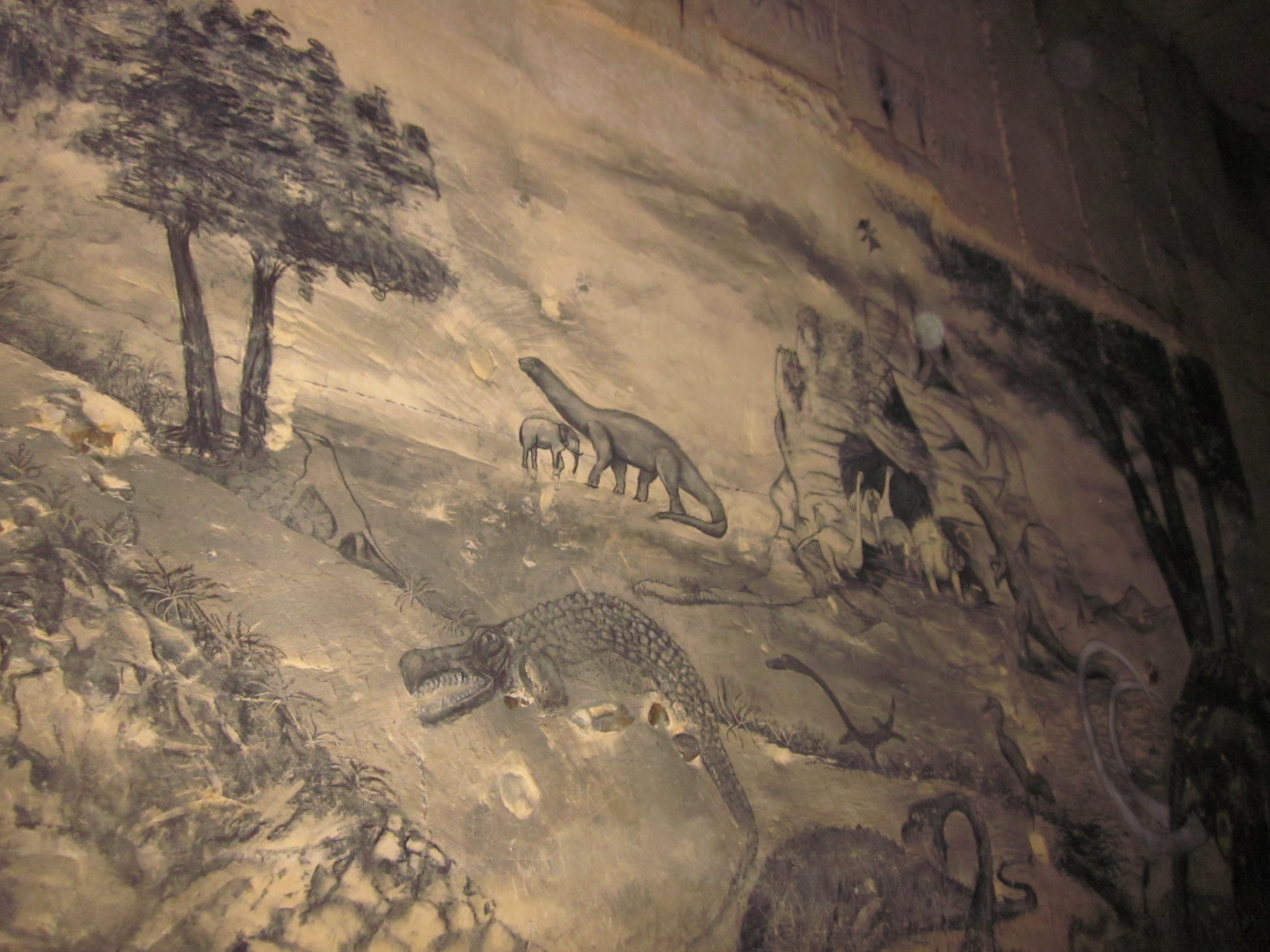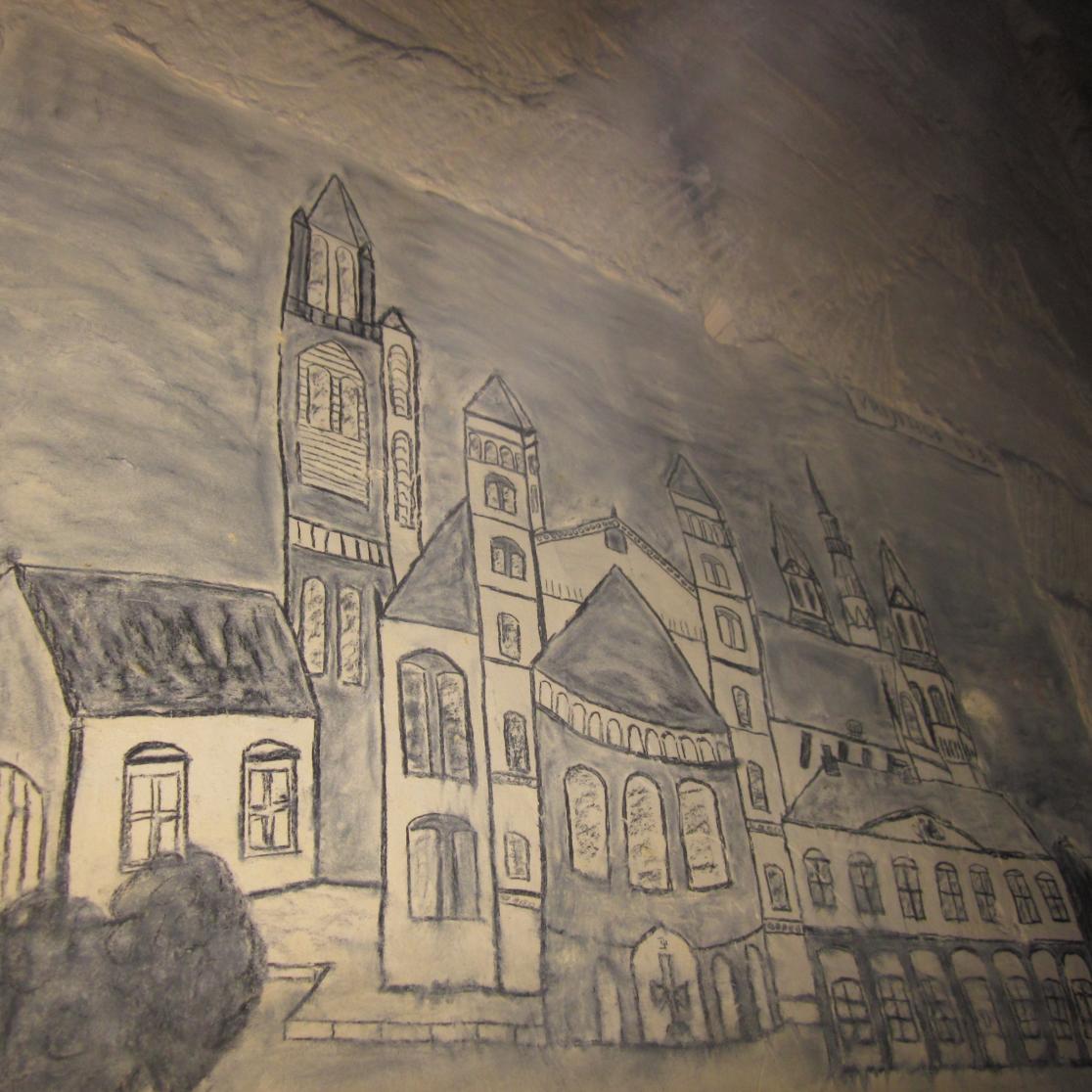Millions of years of history in Caves
Today we went on a tour of the caves beneath Sint Pietersberg Hill. Initially I was not very excited because I heard the caves were man-made and as we all know The Netherlands is not very famous with mountains, so I pictured a couple of small caves built in an attempt to fool tourists in Maastricht into paying for one more “attraction”. But after going there I was extremely impressed and can say the caves are definitely a MUST SEE SIGHT while in Maastricht.
There are 20 000 man-made tunnels which, if put together, would extend to 200 km. Currently only 8000 of those tunnels are left. The limestone hill was formed about 70 million years ago from animal skeletons and shells deposited at the bottom of a sea.
The Romans were the first ones to discover the limestone as a building material. Those Romans… is there is anything they haven’t discovered… They discovered that the limestone, even though soft when left to dry, becomes a perfect building material.

Lots of houses, the inner fortification of Maastricht and the Sint-Janskerk (the big red church on the Vrijthof Square) have been built using the limestone from the caves. By sawing blocks of limestone out of the Sint Pietersberg Hill thousands of tunnels were created and eventually the so-called caves. And strangely enough the tunnels are currently 10 meters high and supported by pillars. In the past the tunnels have been used for people to escape from Belgium to the Netherlands and vice versa during the wars.

What I found most astonishing is the fact that history has left its marks everywhere around the tunnels. You turn around and you see writings on the walls dated 1785. There are beautiful chalk drawings, some of which are more than 200 years old.
During the World War II, the caves beneath Sint Pietersberg Hill played a major role in the defense plan of the city. An evacuation plan for Maastricht residents turned the caves into a place that could house around 45 000 people. The caves had not only a well and primitive toilets, but also one protestant and two catholic chapels, and a bakery with five ovens. When walking around the dark cold tunnels for half an hour I did think that if the bakery would have been open I wouldn’t mind grabbing a snack!
An executive evacuation decision was never made, and eventually only a couple of thousand people took refuge in the caves for 10 days in 1944.
It does not sound like a long time, but when you feel the coldness and 98% humidity, then you would reconsider the insanity of the idea of people living in the caves.
Furthermore two major events took place during those 10 days and both were commemorated on the walls: a dog died and a baby was born. Those events were noted in the history of the caves by a small plate for the dog Flokki and a drawing for the baby born.
There is also a contemporary picture of the man born there hanging on the wall. And the lucky man celebrated his 50th and 65th birthdays in the caves.
Also the caves were the place where a very special fossil of the Maastricht Monster Joe was found. Maastricht residents prided the monster and tourists from all around would come just to see it. Unfortunately the French took the monster during the occupation and it is now displayed in the Natural History museum in Paris. The monster is still a painful topic for people from Maastricht and a point of debate between France and Holland.
My recommendation: Grab a sweater and go visit the caves beneath Sint Pietersberg Hill!
About the author
Maria was an exchange student from Bulgaria at Maastricht University. She was a contirrbutor to the Maastricht Students blog in the year 2012.
-
The Alla
There are many inevitable things that we have to go through in life from the moment we are born: learning how to eat using a fork, learning to use the toilet, saying ‘thank you’, etc. This sequence of proper societal integration continues until we are adults. We always have to adapt to our...

-
1903 Tour de France with Keir Plaice
Keir Plaice, a former semi-professional cyclist and 3rd year Bachelor Arts and Culture student, is embarking on a cycling ride of a lifetime. He is riding the route of the original Tour de France of 1903 and documenting his experience in his Le Grand Tour column in the cycling magazine Soigneur...

-
FASHIONCLASH Festival with Branko Popovic
Every year since 2009, fashionistas descend to Maastricht as the city hosts the FASHIONCLASH Festival. It has attracted more than 900 talents from 50 different countries. This year’s 8th edition is bigger and better, involving more than 150 designers and artists from all over the world who will...
